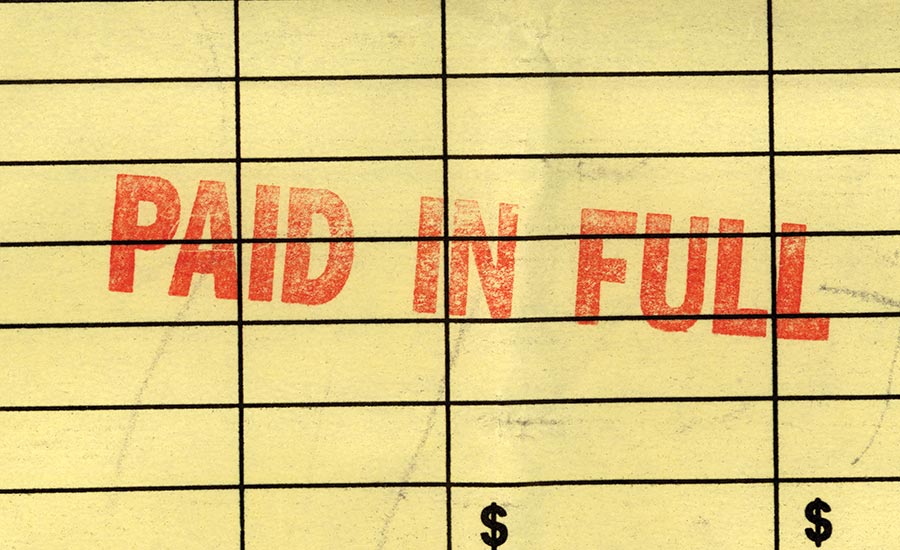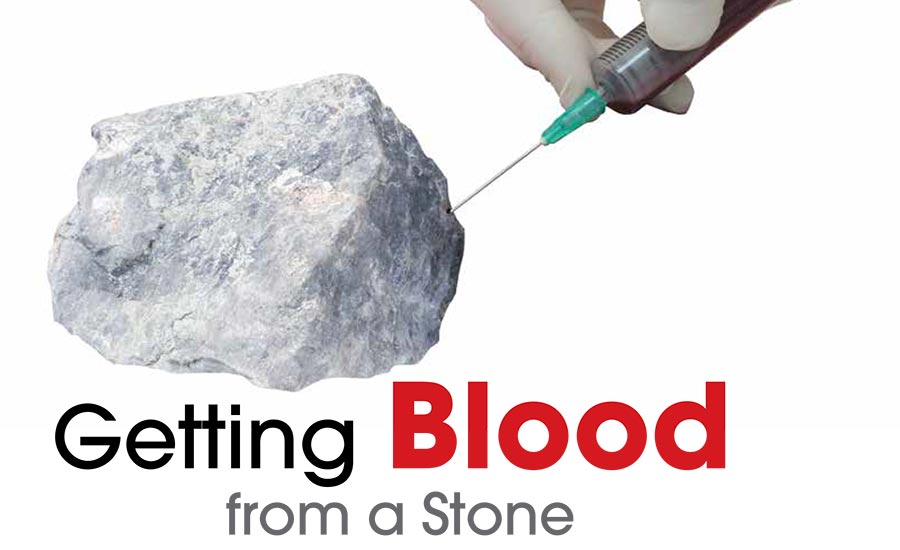They say familiarity breeds contempt. Perhaps that is the inspiration for this piece. Or maybe it’s just that after 17 years of dealing with the same issue, you lose patience with it. Especially when the solution seems so simple. At least on the surface.
I hated my first three months in the restoration industry. Not because of my customers, coworkers, or bosses. I hated it because I could not wrap my head around the dynamics of the relationship between the customer, carrier, and contractor. Providing a service for one party when another party was writing the check just seemed like a recipe for disaster. Yet this is the world we still live in today. And I am still here, indirectly or not, dealing with the very same issue.
While this subject nearly ended my career before it even started, I learned to adapt. And through the help of some pretty smart people, maintain enough respect for the situation to be successful. When stopping to think about the economics of the topic, the behavior of insurance carriers toward price negotiation and payment delays makes sense.
Let’s break this down into its most rudimentary form. The insurers are sitting on a pile of money that they reinvest and make more money on daily. Of course, the amount they make each day is relative to the size of the pile. Consequently, the longer they hold onto each dollar, the more money they can continue making. Add a half dozen zeros to the end of that dollar and now we start understanding the magnitude of the value of each dollar each day.
On the flip side, the contractor must fund their restoration projects from the time they get the initial phone call to the time they receive final payment which, on average, can take 45 days or more. When you consider the cost and value of jobs that are a work in progress (WIP) at any given moment, the operating capital necessary to fund them can be hundreds of thousands of dollars. Just who is putting up that pile of money if the carrier isn’t paying for 45 days? You guessed it! Go look in the mirror.
So how much does this cost the contractor? Well, at the time of writing, the WSJ Prime rate is 5.25 percent. Assuming good credit and financial stability, a reasonably modest assumption might be that the business has a line of credit at prime + 1.5 percent — or 6.75 percent total. This means for every $1,000 borrowed, it costs the business 18 cents per day. This might seem to be pennies on the dollar, but stay with me.
If it takes an average of 45 days to collect payment, then that $1,000 will cost you $8. My guess is that most contractors have more than $1,000 in Accounts Receivable, so take that same eight bucks and multiply it by the number of thousands in A/R. On $250,000, it would be $2,000!
Hopefully this topic has your attention. Let’s now look at four ways we can avoid, or at least improve, the A/R battle with insurance carriers. It can mean tens of thousands of dollars to your bottom line.

1. Transparent Pricing
I receive dozens of calls each year from contractors frustrated with insurance carriers who are still negotiating a mitigation “estimate” months after the work was completed. Upon review of the paperwork, I usually find that the contractors are still using a standard work authorization with no specified rates or pricing, no significant deposits, and no specified terms for payment upon completion. This seems normal, because it is the traditional practice of most service providers when funding is coming from the proceeds of an insurance policy. The auto, medical, dental, or vision services are all similar. But when was the last time you asked your dentist how much it costs to fill a cavity?
This standard approach puts all leverage on the side of the carrier. The first step in rectifying this situation has to be providing at least a good faith estimate or rate sheet in advance of providing the service. Think about it this way: if you were going to pay thousands of dollars of your own money to have work done in your home, wouldn’t you want to know the price before you signed any type of contract or agreement?
A case can certainly be made that upfront and transparent pricing might scare customers away and force their hand to shop service providers. This is when contractors must take a long, hard look at their pricing and consider their costs with the service. The market is only becoming more competitive because of the lucrative profit margins associated with mitigation work. Knowing this, we have to understand that carriers are only obligated, by the terms of the policy, to reimburse the insured for rates that are reasonable and customary. Trying to charge rates that are significantly higher is like trying to get blood from a stone — it simply doesn’t work. That’s when it turns into a “game” about getting paid in a reasonable amount of time. Based on what was presented earlier, we know who wins in that!
2. Open Communication
The next issue I commonly find with receivable struggles is a lack of communication between the interested parties. Even if a scope of work is agreed upon in advance, the documented communication trail between contractor, customer, and carrier is limited at best. This turns the collection efforts into a “he said, she said” or “that was never discussed” battle.
To rectify this issue, I recommend over-communicating everything. Make your contracts crystal clear, written in plain language, and make sure copies are sent to both the customer and the adjuster in advance of any work being done. Verbal discussions with either party should be summarized in an email and/or recorded in a communication log. And it all needs to be done in a timely manner. When in doubt, assume nothing and communicate everything.
After interviewing hundreds of insurance adjusters over the years, I can say with a high degree of certainty that they do not like surprises. Whether it is scope or schedule changes, delays or disputes, no one wants to find out that the parameters of the service arrangement have changed weeks later. I recommend calling the adjuster or any representative of the carrier from the first day to get them on site and often throughout the course of the project. Even if it is nothing more than a series of lengthy voicemails or emails which go unanswered. Remember, they are the ones writing the checks!
3. Clear, Concise, and Informative (CCI) Estimating
At Violand Management’s Restoration Estimating program, we teach attendees to write an estimate that is so clear, concise, and informative that someone who has no previous knowledge of the loss will be able to read it, understand it, and justify writing a check for the work proposed. There are several elements to making this happen including, but not limited to, a written damage assessment, proper line item logic and order, and prolific use of comment lines. None of this is technically challenging. It’s just a lot of common sense.
The estimate serves a few purposes in a restoration project, one of which is a claim settlement. The insurance adjuster must use the estimate to support the check he/she is writing. Of course, they have rules which they must follow regarding the “acceptable” charges allowed by their management. This de-emphasizes the scope and creates a presentation issue. Since each carrier is different, it is important to remember the nuances of each and adjust the line item presentation accordingly. In other words, give them what they want to see instead of trying force them to accept what they can’t.
Making this work successfully while still maintaining margins involves gaining a strong understanding of what is and is not “acceptable” to the carriers. The only way to accomplish this is to ask. Refer back to my second point about open communication. The biggest mistake I see contractors make in this area is asking closed questions like, “Can we charge for this?” Turn those questions into open-ended “what and how” questions and you will probably start getting the answers you are looking for. Try asking questions like “How would you like to see this presented in the estimate?” Or, “How will this <scope item> be paid for?” Most adjusters will tell you without hesitation when asked the correct way.
4. Supporting Documentation
We all know the old saying “If it isn’t documented, it never happened.” This is fine if we are talking about mitigation invoices, but that should be support for information that has already been communicated. Items like moisture readings, daily site reports, employee rosters, and subcontractor bills are pretty standard today and necessary support to justify payment. If you aren’t already sending this information without a request, you’re just asking for a delay in payment.
On the repair side, contractors need to take a more proactive approach with supporting documentation. When it comes to items like code upgrades, installation methods, warranty issues, and mechanical or repair vs. replacement recommendations, these issues need to come with enough information for the carrier to make a logical approval. Simply being the expert in this business is not enough. There are enough contractors out there with less-than-stellar expertise to make carriers question a scope of work. If an adjuster has to ask a “why” question to something you are proposing, you probably aren’t providing enough supporting documentation.

Blood Flow
By now you might be thinking I am suggesting that contractors cave like a deck of cards in an effort to get paid faster. This could not be further from the truth. I am a staunch advocate for squeezing every dollar in profit that you can. However, I am a very logical manager when it comes to the cost of time and effort. And, if it is costing you more money to collect on areas that are causing the payment delays, it doesn’t require much analysis to figure out what should be done.
Principles can be a funny thing in life and business. They can be a badge of honor and integrity which we wear with pride or they can be the instrument that continues to strike the stone because we believe we can draw blood. As someone who has used my principles in both ways, I can tell you with a fair amount of certainty that you can get blood from the stone, but it ultimately comes from your own hands. If you are like me, you probably don’t need any more scars on your knuckles.
Cash is the blood that flows through your company’s veins and is lost every day. If you can’t replenish cash faster than it runs out, your business dies. Add some priority to your principles and place equal emphasis on payment and profitability. Be transparent with the pricing of your services up front. Utilize open and timely communication. Write estimates that are clear, concise, and informative. And provide supporting documentation with your recommendations. If you do these four things you can move that money to the proper place on your balance sheet — your bank account.


